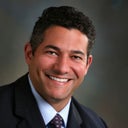I need to have a dent above my tip filled in after a revision rhinoplasty. Can I have temporary filler put in for the year I will have to wait before a more permanent solution, like filling in the space with soft tissue or cartilage? Will the filler disolve enough in time? Is this a good idea?
Answers (30)
From board-certified doctors and trusted medical professionals
More Revision Rhinoplasty Questions
See all Revision Rhinoplasty Q&AWE SEND PRETTY
EMAILS
What’s trending? Who’s turning heads? Which TikTok myths need busting? We’ve got you. No fluff, no gatekeeping—just real talk. Get our free, unfiltered newsletter.









